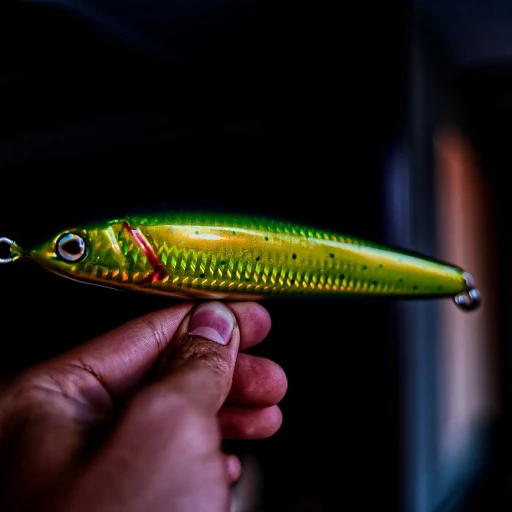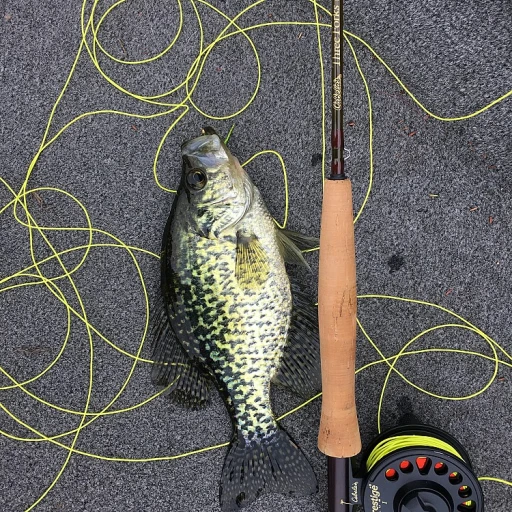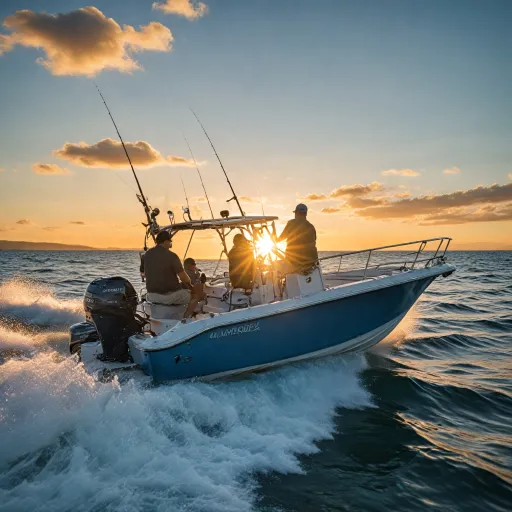
Understanding the role of marker buoys in recreational fishing
Why Marker Buoys Matter in Recreational Fishing
Marker buoys are more than just floating equipment on the water. For recreational fishermen, these buoys play a vital role in marking productive fishing spots, identifying underwater structures, and ensuring safety during both fishing and diving activities. Whether you are fishing from a dock, a boat, or even engaging in scuba diving, a well-placed marker buoy can make all the difference in your experience.
- Location marking: Marker buoys help you mark specific locations, such as deep water drop-offs, submerged structures, or areas where fish are biting. This allows you to return to the same spot with accuracy, especially when visibility is low or currents are strong.
- Safety and visibility: High visibility marker buoys alert other boaters and divers to your presence, reducing the risk of accidents. Surface marker buoys are essential for public safety, especially in busy waters.
- Versatility: These products are not limited to fishing. They are also used in scuba diving to mark dive sites, signal divers’ locations, and indicate open bottom or deep water areas. Some buoys come with buoy labels for easy identification, and rope floats can be attached for added stability.
When choosing a marker buoy, factors like buoyancy, valve type (oral inflation or automatic), and price range (from low to high price) come into play. The right marker buoy can enhance your fishing strategy, help you organize your equipment, and even support privacy policy requirements in certain public waters.
If you’re interested in learning how marker buoys can complement other fishing gear, check out this guide on exploring the world of shrimp traps for enthusiastic anglers. It’s a great example of how different equipment, including buoys, can work together for a more successful fishing trip.
Key features to look for in a marker buoy
What Makes a Good Marker Buoy for Fishing?
Choosing the right marker buoy can make a real difference in your fishing experience. Whether you’re marking a productive spot, setting up a float for deep water, or ensuring safety during diving, the features of your marker buoy matter. Here’s what to look for when selecting this essential piece of equipment.
- High Visibility: A good marker buoy should be easy to spot from a distance. Bright colors and reflective strips help you keep track of your mark, even in rough water or low light. High visibility is not just a convenience—it’s a safety feature, especially in busy areas or during scuba diving.
- Buoyancy and Stability: The buoy needs to stay upright and visible, even with waves or current. Look for products with reliable buoyancy, whether you’re using them as rope floats, surface markers, or for deep water applications. Some buoys have an open bottom design for better stability.
- Durable Construction: Marker buoys are exposed to sun, salt, and impact. Materials like heavy-duty PVC or marine-grade plastics last longer and resist punctures. Check for strong seams and a robust valve for oral inflation or quick deflation.
- Easy Deployment: A good marker buoy should be simple to deploy and retrieve. Features like a large valve, easy-to-grip handles, and a clear buoy label help. Some models come with a rope or line included, making setup faster.
- Adaptability: Consider if you need a buoy for multiple uses—fishing, diving, public safety, or as a dock marker. Some products are designed for versatility, with options for attaching weights or customizing the float for different water depths.
- Price and Value: Marker buoys come in a range of prices. While high price often means more features or durability, there are budget-friendly options that perform well. Compare price high and low options, and check if the product is in buoys stock before buying.
For more on how marker buoys fit into different fishing techniques, you might find this guide on mastering the art of darter fishing helpful.
Remember, the right marker buoy is more than just a float—it’s a piece of equipment that supports your safety, efficiency, and success on the water. Look for features that match your needs, whether you’re a diver, angler, or just want to mark your spot with confidence.
How to use a marker buoy effectively
Setting up your marker buoy for best results
To get the most out of your marker buoy, start by choosing a spot where you want to mark underwater features or your fishing location. Attach the rope float securely to the buoy, ensuring the length matches the depth of the water. For deep water or scuba diving, a longer rope and a high visibility float are essential for safety and accurate marking. Always check the valve for proper inflation—oral inflation is common, but some models offer a high low pressure valve for quick setup.
Deploying and retrieving your marker buoy
When you’re ready to deploy, gently lower the marker buoy into the water. Avoid tossing it, as this can tangle the rope or cause the buoy to drift off target. Let the rope float unwind until the buoy reaches the bottom or the desired depth. If you’re using an open bottom design, make sure it fills with water to maintain stability. Surface marker buoys are especially useful for marking spots near the dock or in areas with public safety concerns, as their high visibility helps alert other boaters and divers.
Maintaining accuracy and safety
- Label your buoy clearly with buoy labels to avoid confusion if multiple markers are in use.
- Monitor the position of your marker buoy regularly, especially in strong currents or windy conditions.
- For scuba diving or deep water fishing, always use equipment rated for the depth and conditions. High price products often offer better durability and buoyancy control.
- Keep an eye on the privacy policy of your equipment provider, especially if you’re purchasing online or from buoys stock suppliers.
For more on using marker buoys to pinpoint productive fishing spots, check out this guide on effective techniques for catching bass. Integrating these tips with your current diving equipment or recreational fishing gear can make a noticeable difference in your results.
Common mistakes to avoid with marker buoys
Missteps That Can Undermine Your Marker Buoy Use
Marker buoys are essential for recreational fishermen, divers, and anyone using rope floats or surface markers to mark productive spots or ensure safety. However, even experienced anglers and divers sometimes make mistakes that reduce the effectiveness of these products. Here are some common pitfalls to avoid when using marker buoys, whether for fishing, scuba diving, or public safety:
- Choosing the Wrong Buoy for the Conditions
Not all buoys are designed for deep water or high visibility. Using a low-visibility float in murky water or a lightweight marker in strong currents can result in losing your mark or even your equipment. Always match the buoy's buoyancy, color, and size to your environment and activity, whether it's fishing, diving, or marking a dock. - Improper Inflation or Valve Use
Many marker buoys and surface markers feature oral inflation valves or open bottom designs. Failing to fully inflate the buoy, or not securing the valve, can cause it to lose buoyancy and sink. Double-check your equipment before deploying, especially if you’re using it for scuba diving or in deep water. - Neglecting to Label Your Buoy
In busy areas, unlabeled buoys can be mistaken for public safety equipment or lost among other buoys stock. Using buoy labels with your name or a unique mark helps you identify your gear and avoid confusion, especially when multiple anglers or divers are present. - Poor Anchor or Rope Management
Improperly secured rope floats or anchors can cause your marker buoy to drift, making it unreliable for marking a fishing spot or a diver’s location. Always ensure the rope is the right length for the depth and securely fastened to both the buoy and the bottom. - Ignoring Product Specifications
Some anglers focus only on price, missing key features like high visibility, high-low inflation options, or open bottom designs. Reviewing the product details and comparing price high to value ensures you get the right marker buoy for your needs. - Forgetting Safety and Privacy Policies
When purchasing buoys or diving equipment online, check the retailer’s privacy policy and return terms. This protects your personal information and ensures you can return a product if it doesn’t meet your expectations.
By understanding these common mistakes, you can make better choices about your marker buoys and related equipment, ensuring a safer and more productive experience on the water.
Comparing popular marker buoy models for recreational fishermen
Side-by-Side Look at Leading Marker Buoys
When choosing a marker buoy for recreational fishing, comparing popular models can help you make a smart investment. Here’s a breakdown of some well-known products, focusing on features that matter most to fishermen—like buoyancy, visibility, valve type, and price.| Product | Buoyancy & Float | Visibility | Valve Type | Open Bottom | Price Range | Best Use |
|---|---|---|---|---|---|---|
| Classic Surface Marker Buoy | High | High visibility orange/yellow | Oral inflation valve | Yes | Low to mid | General fishing, shallow to deep water |
| Heavy-Duty Dock Buoy | Very high | Reflective labels, bright colors | Standard valve | No | Mid to high | Public safety, marking docks, rope floats |
| Scuba Diving Marker Buoy | Medium | Red/white diver flag | Oral & automatic inflation | Yes | Mid | Diving, deep water, scuba equipment |
| Compact Mark Buoy | Medium | Yellow/green, high visibility | Simple valve | No | Low | Quick marking, small boats |
What Sets These Buoys Apart?
- Buoyancy and Float: High buoyancy is crucial for deep water and strong currents. Surface marker buoys and dock buoys tend to offer the best float.
- Visibility: Look for bright colors and reflective buoy labels. This is key for safety and marking your spot in busy areas.
- Valve Type: Oral inflation valves are common for fishing and diving equipment. Some models offer both oral and automatic inflation for added convenience.
- Open Bottom: Open bottom designs are popular among scuba divers and those needing quick deployment.
- Price: Prices range from budget-friendly to high price, depending on durability, size, and features. Consider your needs before investing in a high price product.
Choosing the Right Marker Buoy for Your Needs
If you’re fishing in deep water or need to mark a precise spot, a high visibility surface marker buoy with strong buoyancy and a reliable valve is ideal. For public safety or dock marking, heavy-duty buoys with reflective features are best. Divers and those using scuba equipment should look for open bottom models designed for easy inflation and deployment. Always check the manufacturer’s privacy policy and view full product details before purchasing. Stock availability can vary, especially for popular models. Remember, the right marker buoy can make your fishing experience safer and more productive by helping you mark your location with confidence.Expert tips for integrating marker buoys into your fishing strategy
Integrating Marker Buoys for Maximum Efficiency
For recreational fishermen, marker buoys are more than just floating indicators. When used thoughtfully, they become a core part of your fishing equipment, improving both efficiency and safety on the water. Here are some expert strategies to get the most out of your marker buoys:
- Choose the right buoyancy: Select a marker buoy with adjustable buoyancy or a reliable valve system. This ensures your buoy stays visible in deep water or strong currents, and it won’t drift away from your intended spot.
- Prioritize high visibility: Opt for buoys or rope floats in bright colors with clear buoy labels. High visibility is crucial for both marking your fishing area and ensuring public safety, especially in busy waters or near a dock.
- Match the marker to your fishing style: If you’re diving or using scuba equipment, a surface marker or open bottom buoy can help you mark underwater features or your own position. For anglers fishing from a boat, a classic mark buoy or float is often sufficient to mark productive spots.
- Consider durability and price: Compare products based on material quality, price high to low, and features like oral inflation or open bottom design. A higher price often means better durability and reliability, especially for frequent use or challenging conditions.
- Label your buoys: Use clear buoy labels to identify your equipment, especially if you fish in areas with a lot of buoys stock or shared access. This helps maintain privacy policy standards and prevents confusion with other fishermen.
- Integrate with your overall strategy: Use marker buoys to create a visual map of underwater structures, drop-offs, or bait concentrations. This allows you to return to productive spots and avoid common mistakes like misplacing your mark or losing track of your equipment.
Advanced Tactics for Marker Buoy Use
- Combine with diving equipment: For those who enjoy scuba diving or snorkeling, a marker buoy can double as a safety device, signaling your position to boats and other divers. Always use a surface marker or sur mark when diving in deep water for added safety.
- Monitor water conditions: Adjust your marker buoy’s position and buoyancy based on current, wind, and water depth. This ensures your mark stays accurate and visible throughout your fishing session.
- Regularly inspect your gear: Check the valve, rope floats, and overall condition of your marker buoys before each trip. Reliable equipment is essential for both safety and effective marking.
By integrating these expert tips, recreational fishermen can make the most of their marker buoys, enhancing both their fishing results and safety on the water. Whether you’re marking a productive bottom structure or ensuring your presence is known during scuba diving, the right marker buoy is a valuable addition to any fishing setup.













